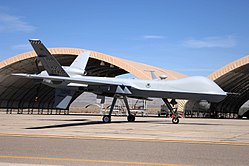Search results
Appearance
There is a page named "Tactical Air Command" on Wikipedia
- Tactical Air Command (TAC) is an inactive United States Air Force organization. It was a Major Command of the United States Air Force, established on...91 KB (11,684 words) - 08:09, 31 March 2025
- of air combat forces for the Air Force, and it is the direct successor to Tactical Air Command. Air Combat Command is headquartered at Langley Air Force...44 KB (2,684 words) - 06:25, 31 March 2025
- Air Defense, Tactical Air Command (ADTAC) was a Named Unit of the United States Air Force, and operated at the Numbered Air Force echelon of Tactical...17 KB (1,586 words) - 01:18, 3 November 2024
- The XII Tactical Air Command was a formation of the United States Army Air Forces. Its last assignment was with the United States Air Forces in Europe...23 KB (2,265 words) - 08:24, 31 March 2025
- was one of two Numbered Air Forces of Tactical Air Command. Co-designated as United States Central Command Air Forces (CENTAF) on 1 January 1983, on 2009...76 KB (6,899 words) - 07:45, 31 March 2025
- The XIX Tactical Air Command is an inactive United States Air Force unit. The unit's last assignment was with the Ninth Air Force based at Biggs Field...16 KB (1,817 words) - 08:24, 31 March 2025
- The III Tactical Air Command was a United States Army Air Forces formation. Its last assignment was with Third Air Force stationed at Barksdale Field,...20 KB (2,077 words) - 07:10, 31 March 2025
- September 1970, Clarence J. Douglas, also of the Air Force, assumed duties as chief of staff. Tactical Air Command reassigned the 314th Troop Carrier Wing, with...30 KB (2,591 words) - 08:17, 31 March 2025
- Aerospace Defense Command was a major command of the United States Air Force, responsible for air defense of the continental United States. It was activated...77 KB (7,043 words) - 16:39, 21 March 2025
- 12 AF was one of the Numbered Air Forces of the United States Air Forces in Europe (USAFE) and later Tactical Air Command (TAC), Its units engaged in combat...52 KB (4,217 words) - 08:13, 31 March 2025
- The IX Tactical Air Command was a formation of the United States Army Air Forces. It fought in the European theater of World War II. Its last assignment...14 KB (1,498 words) - 07:11, 31 March 2025
- 1st Tactical Fighter Wing)oldest major air combat unit in the United States Air Force, its origins formed on 5 May 1918. The wing was initially part of Tactical Air Command being formed...48 KB (5,727 words) - 05:41, 31 March 2025Training Command, 1 July – 31 December 1946, 30 August 1947 Tactical Air Command, 1 July 1958 Air Combat Command, 1 June 1992 – present 79th Air Base Group...55 KB (5,185 words) - 07:44, 31 March 2025immediate post-Cold War period, primarily for the Tactical Air Command (TAC) and later the Air Combat Command (ACC), training USAF, NATO and other Allied pilots...49 KB (5,743 words) - 03:36, 25 January 2025March 1946 Strategic Air Command, 31 March 1946 – 1 October 1976 Tactical Air Command, 1 October 1976 – 1 June 1992 Air Combat Command, 1 June 1992 – present...64 KB (6,223 words) - 06:47, 31 March 2025retired US Air Force General Wilbur L. Creech, the former commanding officer of Tactical Air Command (TAC), the predecessor command of the current Air Combat...35 KB (3,306 words) - 06:45, 31 March 2025
- Strategic Air Command and Tactical Air Command were deactivated on June 1, 1992. Many of their assets were incorporated into Air Combat Command, headquartered
- him on yours. One hundred years of air power led to the development of air platforms, air combatants and air command and control structures that are very
- An Overview of Tactical Combat This book will delineate the attributes of Tactical Combat and focus on a field proven methodology which effectively responds
)















